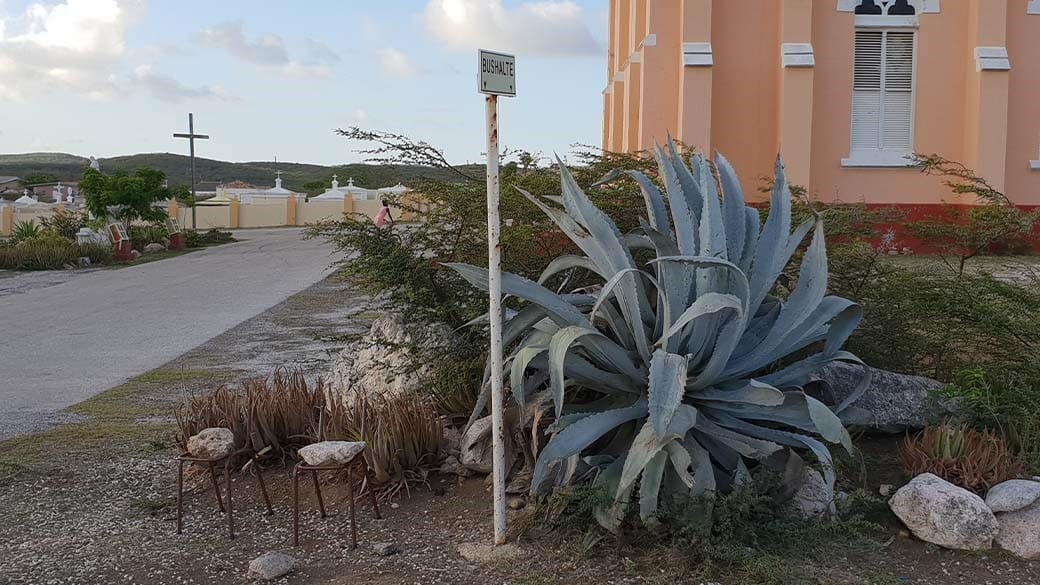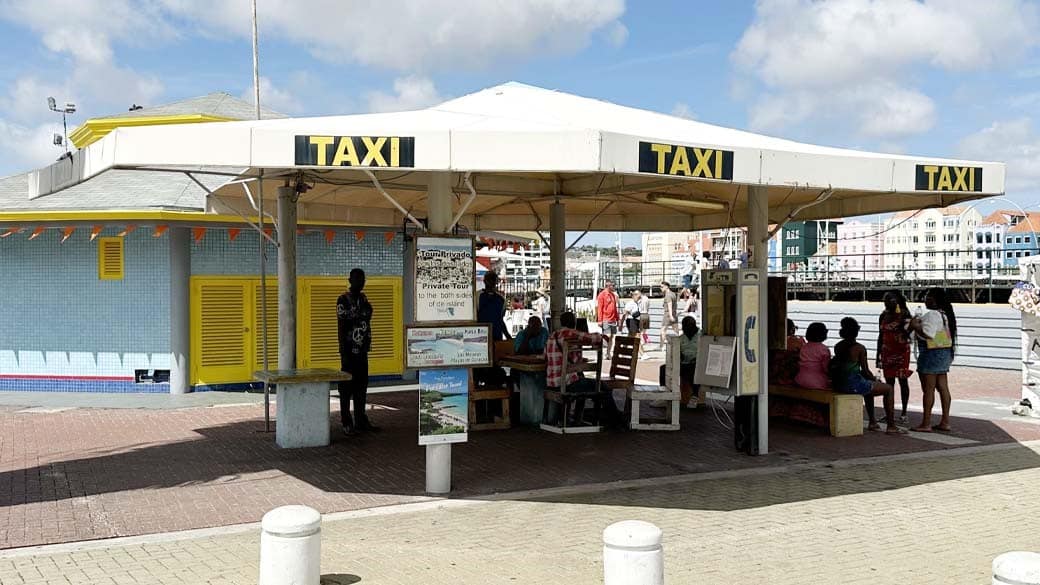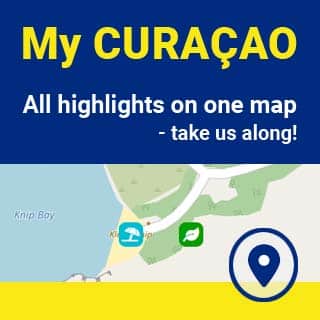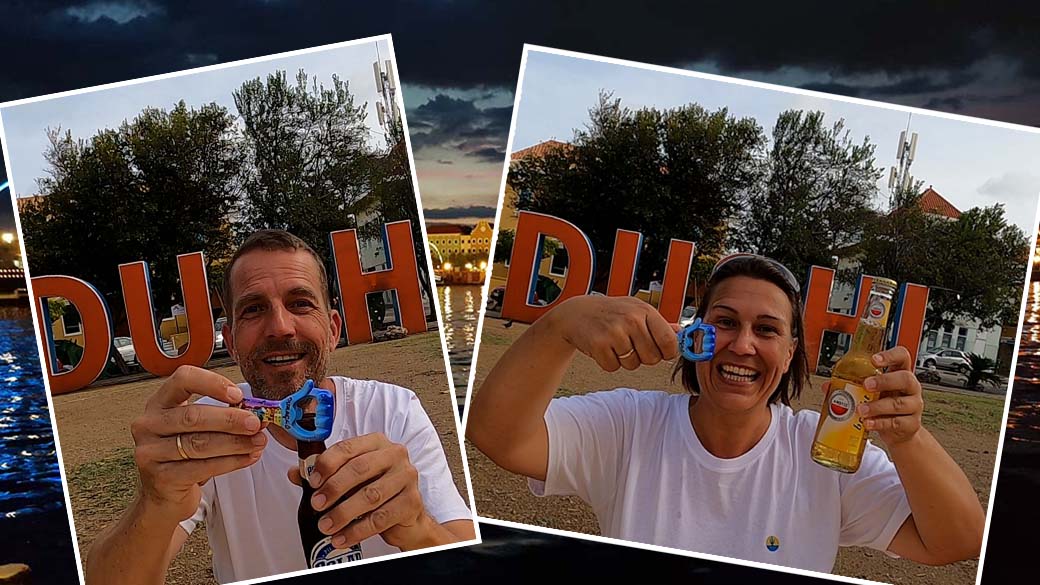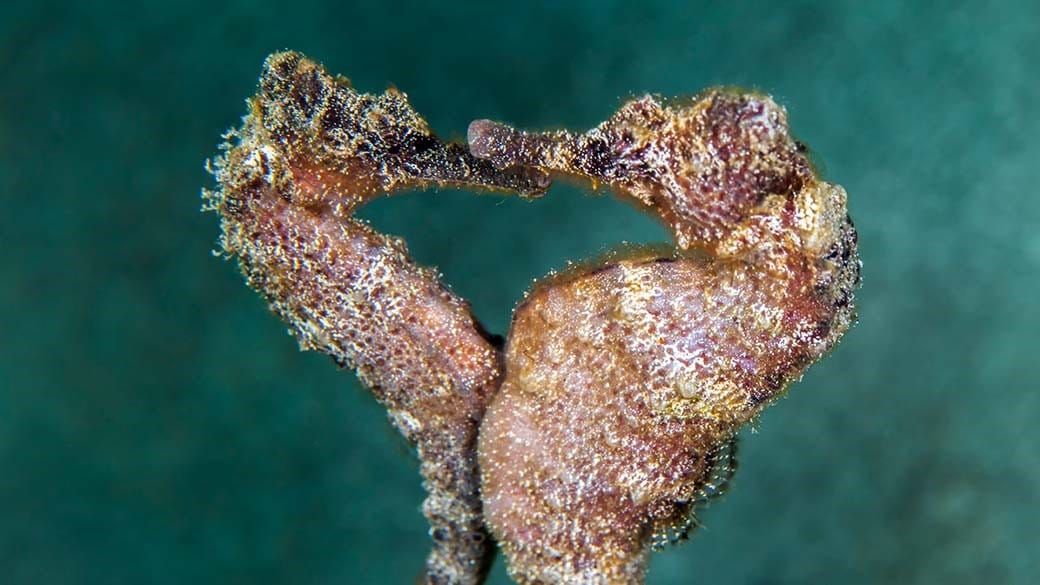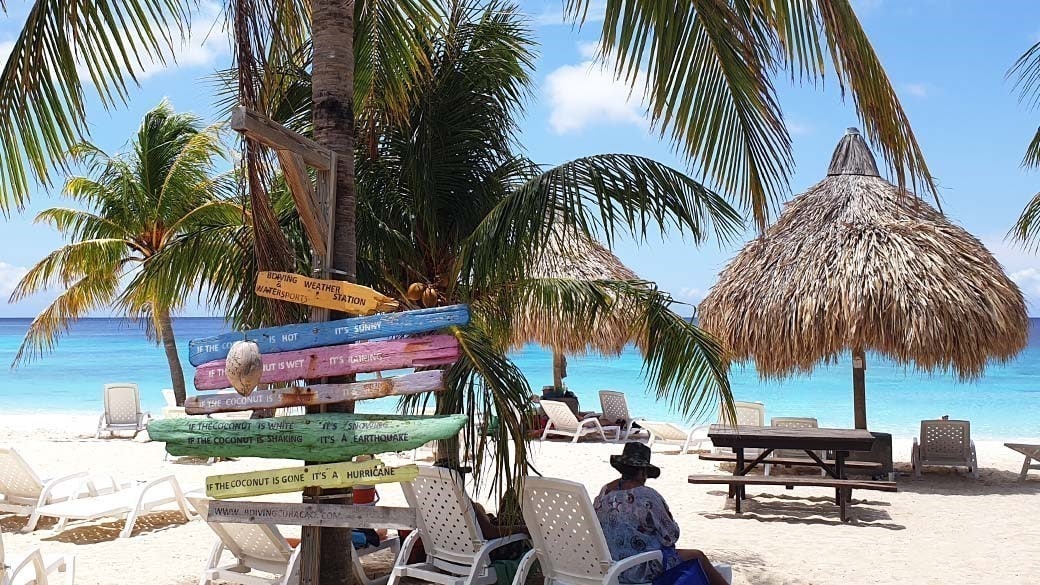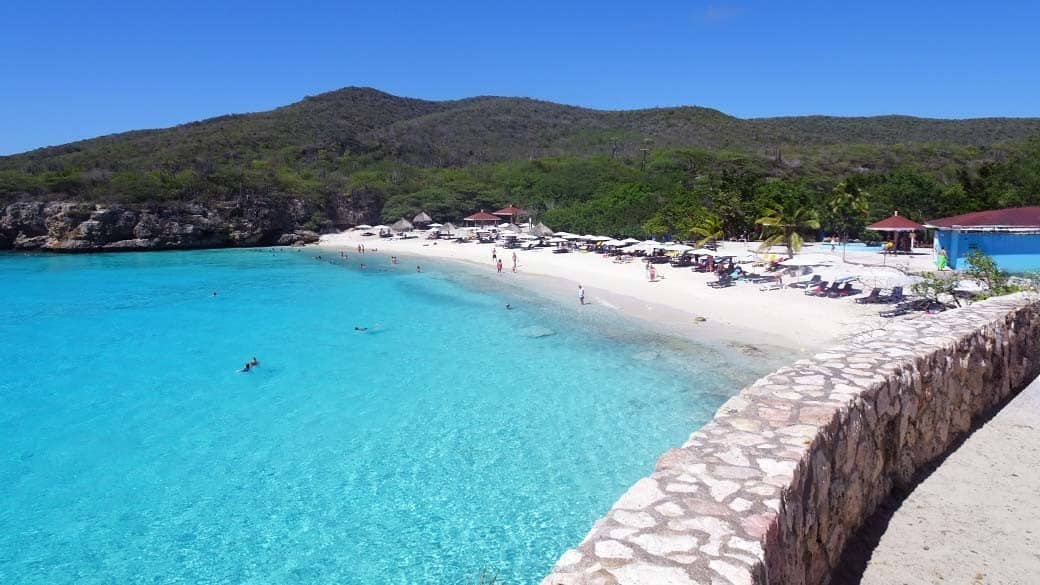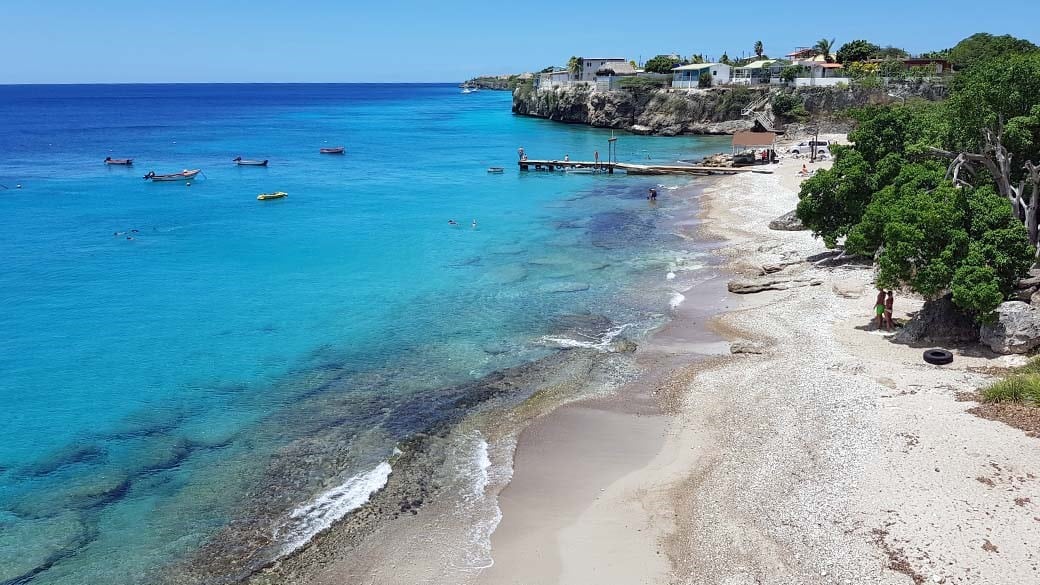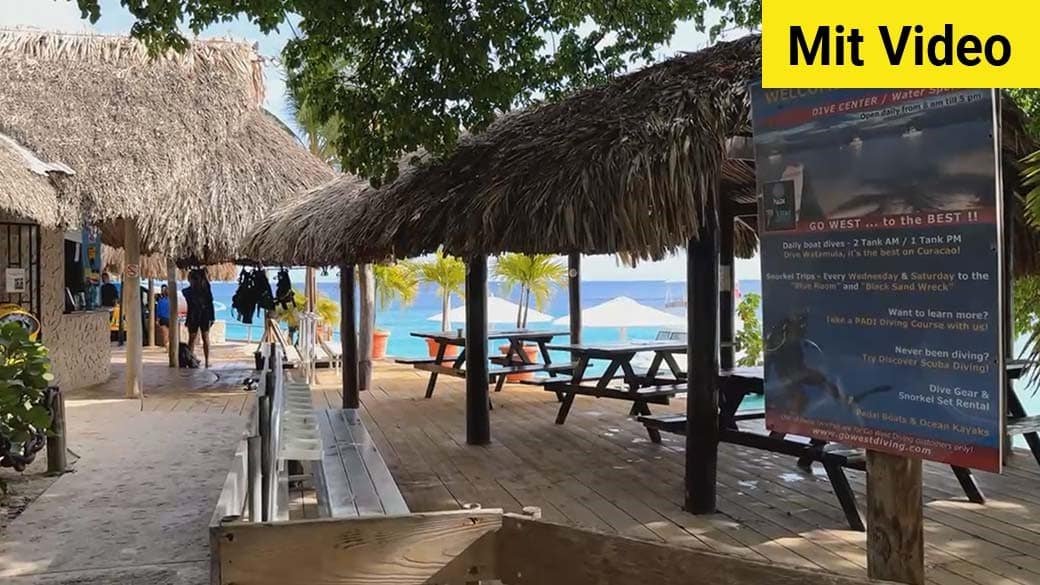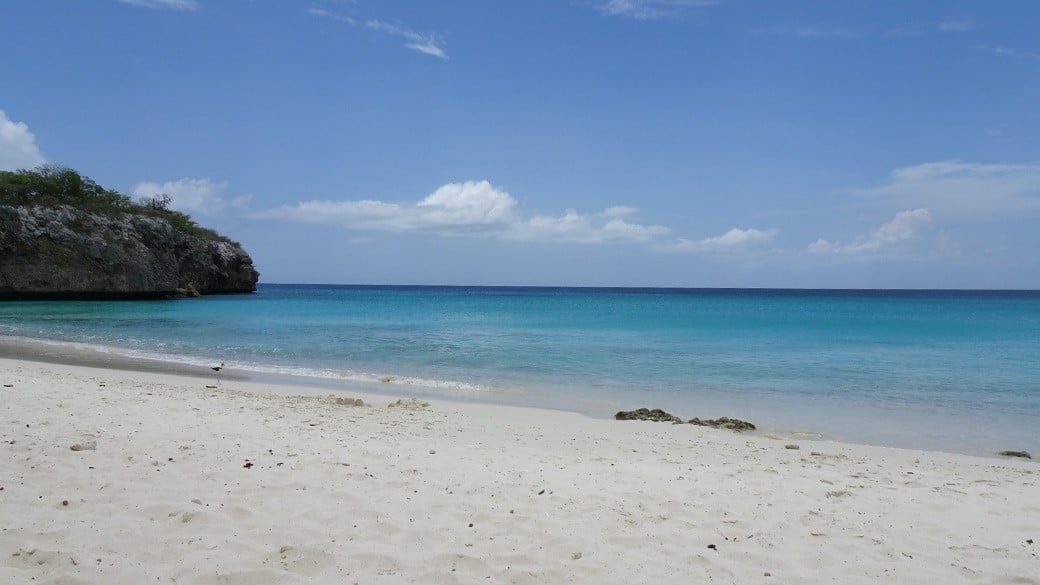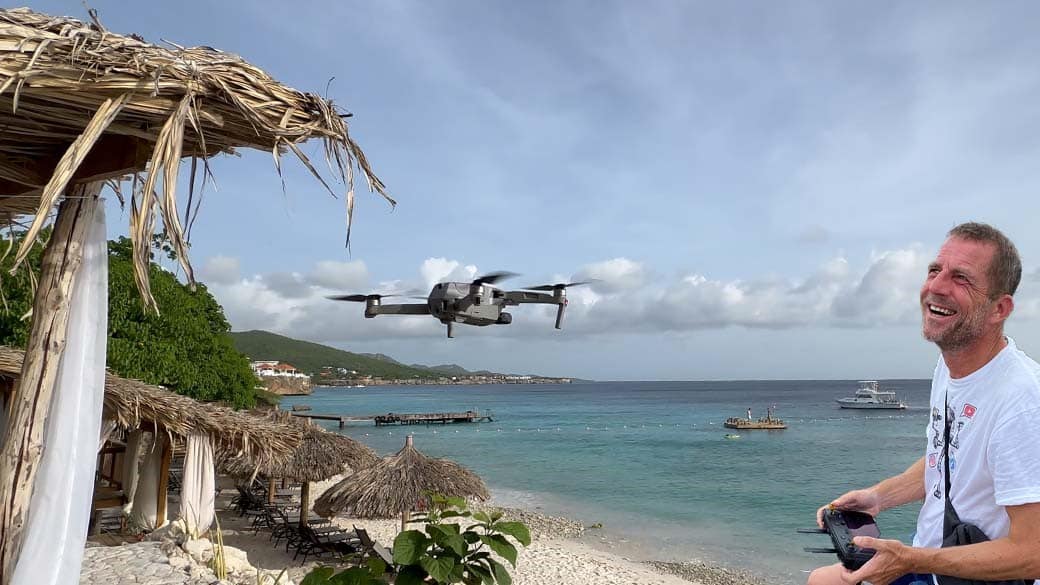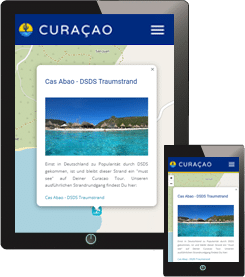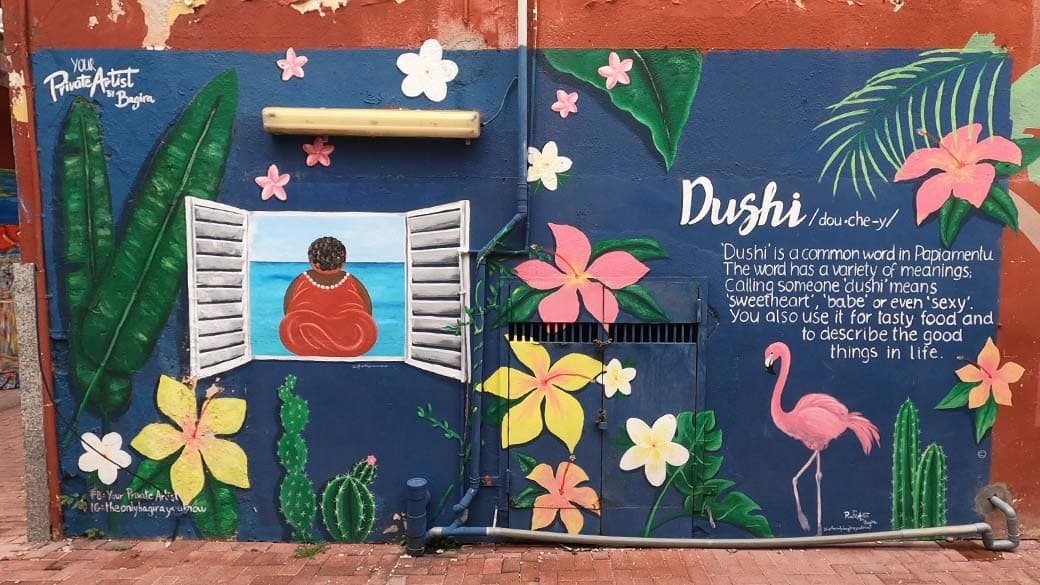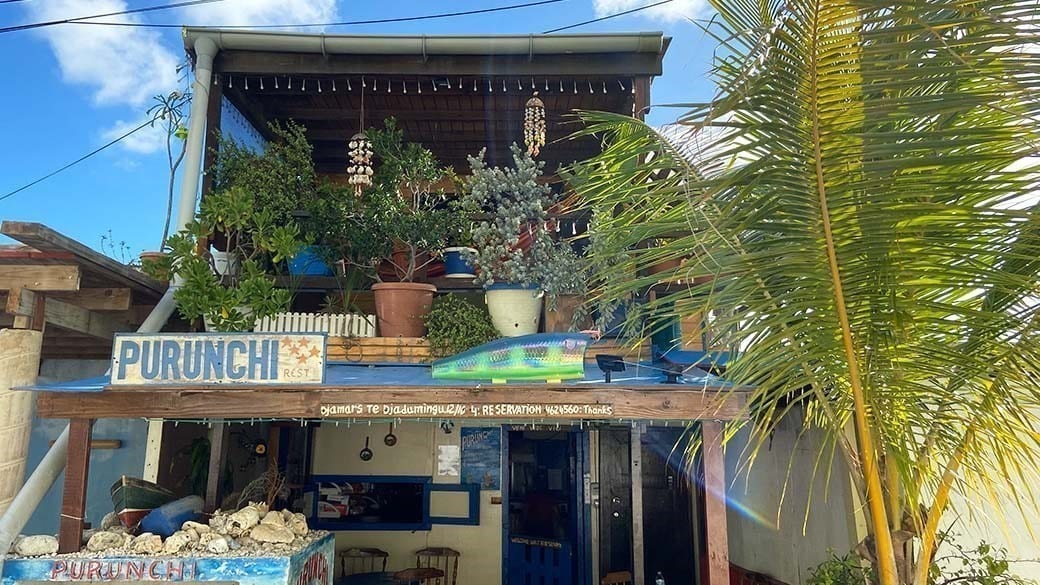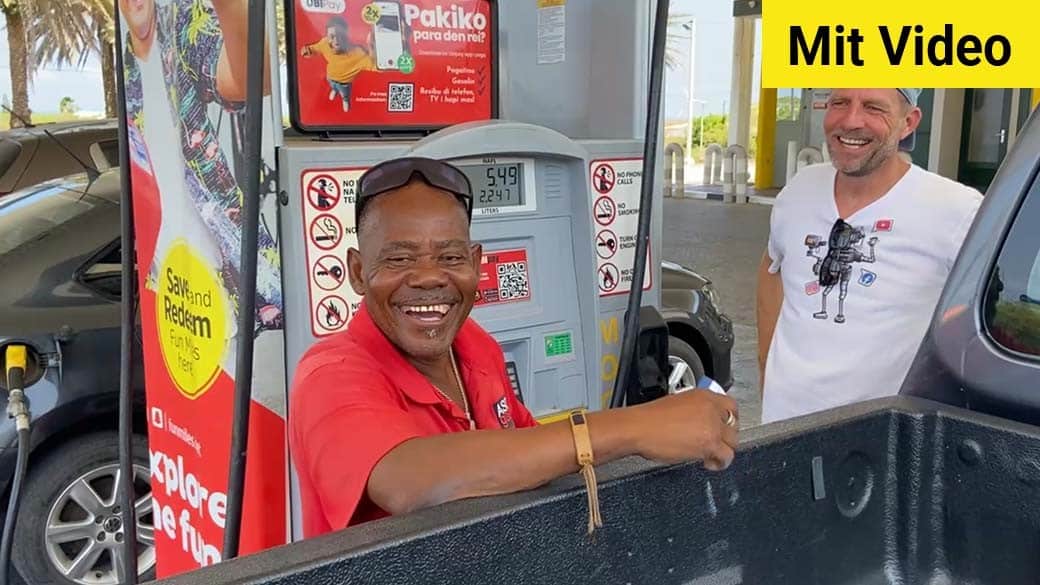How to get around in Curacao
Rental car, public transport and other options

When you're planning your trip, one of the first things you need to figure out is how to get from the airport to your accommodation. And that's just the start. Once you're on the island, you'll probably want to know how to get around, too. This article will help you figure out the best way to get from A to B on Curaçao.
If you love your bike, you push it!
This is a common saying in southern Germany when you want to sarcastically express your sympathy to someone who has a flat tire. If you're planning to cycle on Curacao, you'll remember this saying. There are two main reasons for this: firstly, you'll probably be the only one with a bike and secondly, the island is not really suited for cycling. The majority of the roads are potholed and bumpy, especially at the edges of the asphalt. Additionally, the island doesn't have any designated cycle paths, which is probably down to the fact that very few people cycle.
The heat and salt from the sea don't just affect the road surface. They'll affect you too, I promise! When it's consistently over 30 degrees in the shade, a bike is only for athletes.
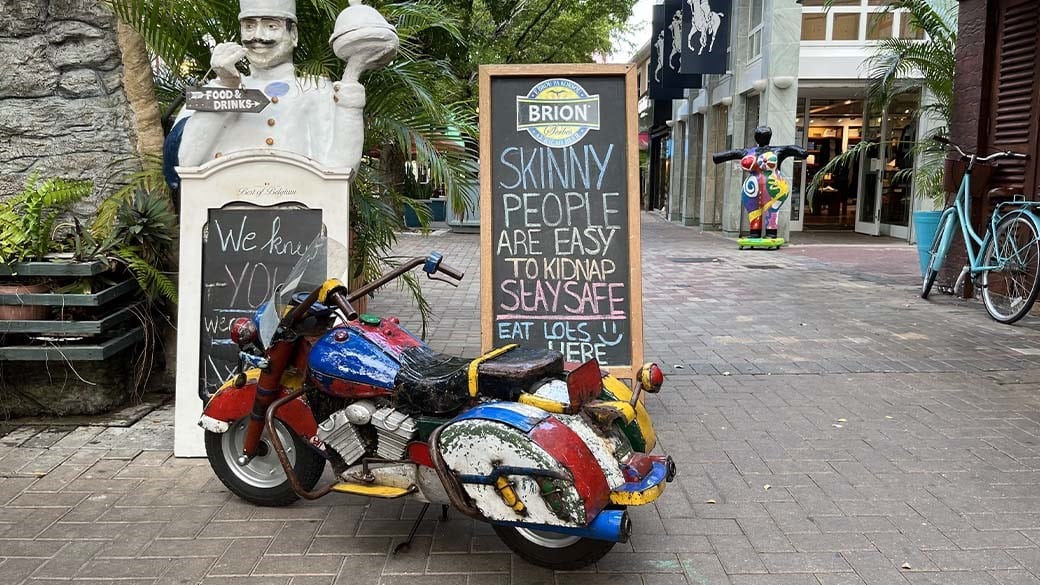
Rare forms of transportation in Curacao: scooters and bicycles
Nevertheless, it seems like there's a clear market for bike-focused accommodations and guided cycling tours. We haven't yet seen anyone out on their bikes, but we'll have to check it out for ourselves 🙈🥵
The Hitchhiker's Guide to Curacao
Anyone who knows big cities like Dubai or Bangkok will probably use a cab or a service like Uber at least once, even though good public transport is available. This won't be the case on Curacao. The only cab ranks we know of are at the airport next to the rental car pick-up point and at the Queen Emma Bridge in Otrobanda. There might be some private cab drivers you can hire to pick you up at the airport. We've never seen a cab with a sign on the roof on the island. We'll keep an eye out for them during our upcoming visit and then update the article. We'll also fire up our Uber app and see if anyone is active. It'll be interesting to see what we find!
However, we know that a private airport transfer via cab, for example to Coral Estate area (in the middle of the island), costs about $70 one-way! There's also a recommendation from one of our friends: "Taxi Christina" (WhatsApp: +599 9 524 8384). You can pre-book your pick up with her, and more importantly, she's really reliable.
Public transportation
There is no subway or any other form of transportation by train on the island. You get around by car or bus. The only public transport are the numerous buses, which are decorated with cool license plates like "BUS 107" or "BUS 123." However, they're more like big vans.
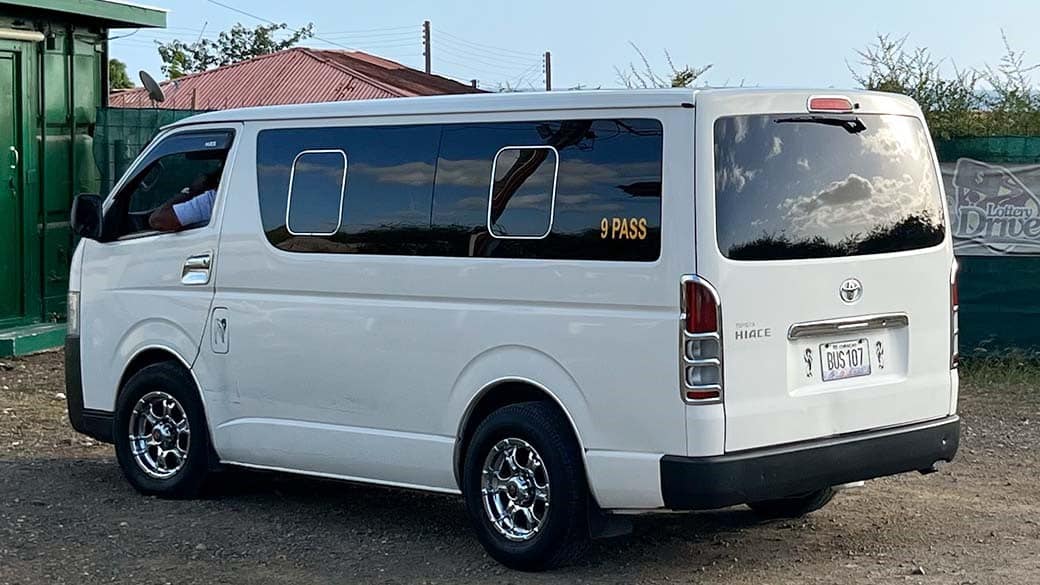
Public bus in Curacao with the number 107
One exception is the beach bus, which travels from beach to beach in the west of the island and looks like a really grown-up bus. Here, too, we realize while writing this article that even for us as "old Curacao hands" there is still a lot to discover. We will try out the buses for you soon, we promise!
Look closely and you'll see lots of bus stops. These aren't always obvious because there are often no bus shelters or signs. You've just got to know which stops the buses use and where the buses go. Apparently, the buses will also stop outside the stops if you signal to the driver that you want a lift.
For more details, head over to the ABC (Auto Busbedrijf Curacao) website.

A somewhat hidden bus stop on the main road in Lagun
What we know, because we have already given a lift to an islander who was waiting at the bus stop next to the Whitehouse Lagoon [link article] and chatted with her: The buses come rather irregularly and, if you have to change, this is often associated with long waiting times at the respective transfer point. The frequency of the buses in the west is more like 2 hours than 2 minutes.
Feel free to write your experiences in the comments. We would be interested to hear if any of you have already traveled by bus on Curacao!
Discover Curacao on a booked tour
You can do it! We know a few providers, but have never tried it ourselves. It would be kind of strange if we did: we simply know too much already and concentrate on the "hidden secrets" – in other words, what no tour guide will show you or us.
We've also included a few GetYourGuide offers at the end of the article. If you book through our link, you won't pay any extra, but we'll get a small commission. Thank you in advance if that's the route you take!

Tour bus at Porto Mari beach
The premier class: your own rental car
Booking a stay on Curaçao with accommodation in a hotel and sometimes even with all-inclusive meals is a great option if you don't want to explore the island but want to relax by the pool and on the hotel's own beach! Go for it!
Most people who visit Curacao are interested in the island lifestyle, want to explore the beaches in the west, go to Willemstad, and eat out in one or two secluded restaurants. Snorkeling and diving on the amazing coral reefs are also very popular with a lot of visitors.
If you want to do all of this, you'll need a car. Having a car on Curacao gives you the flexibility to go wherever you like. Even the remotest and most exciting places, like Watamula or Shete Boka, are accessible.
In the article "Your Rental Car on Curacao" we've put together a comprehensive guide to help you find the best deal on your rental car. You'll also find helpful tips and tricks for refueling in the article "How to Refuel on Curacao". And don't forget to check out our map "My Curacao" for all the petrol stations on the island.
Have fun exploring this fascinating Caribbean island!
Test your knowledge: We have prepared several hundred questions about Curacao. Have fun!
Quiz Question
What is Pika?Answer
Pika are pickled onions with chili. Watch out, spicy!
Eetcafé De Buurvrouw sells homemade pika to its guests. Perhaps a souvenir if you want to take something culinary home with you.
Do you like more? Here is another post you might be interested in:
If you enjoyed this article, we would be very happy if you share it with your friends on social media. Thank you very much!
Curacao's underwater world is just as colorful as its lifestyle! Snorkel over and dive right in! On land, we are sure to inspire you with picture-book beaches and unique nature. If lifestyle means good food and drink to you, then perhaps there's something for you in Restaurants & Bars.
How to get around in Curacao
Rental car, public transport and other options

When you're planning your trip, one of the first things you need to figure out is how to get from the airport to your accommodation. And that's just the start. Once you're on the island, you'll probably want to know how to get around, too. This article will help you figure out the best way to get from A to B on Curaçao.
If you love your bike, you push it!
This is a common saying in southern Germany when you want to sarcastically express your sympathy to someone who has a flat tire. If you're planning to cycle on Curacao, you'll remember this saying. There are two main reasons for this: firstly, you'll probably be the only one with a bike and secondly, the island is not really suited for cycling. The majority of the roads are potholed and bumpy, especially at the edges of the asphalt. Additionally, the island doesn't have any designated cycle paths, which is probably down to the fact that very few people cycle.
The heat and salt from the sea don't just affect the road surface. They'll affect you too, I promise! When it's consistently over 30 degrees in the shade, a bike is only for athletes.

Rare forms of transportation in Curacao: scooters and bicycles
Nevertheless, it seems like there's a clear market for bike-focused accommodations and guided cycling tours. We haven't yet seen anyone out on their bikes, but we'll have to check it out for ourselves 🙈🥵
The Hitchhiker's Guide to Curacao
Anyone who knows big cities like Dubai or Bangkok will probably use a cab or a service like Uber at least once, even though good public transport is available. This won't be the case on Curacao. The only cab ranks we know of are at the airport next to the rental car pick-up point and at the Queen Emma Bridge in Otrobanda. There might be some private cab drivers you can hire to pick you up at the airport. We've never seen a cab with a sign on the roof on the island. We'll keep an eye out for them during our upcoming visit and then update the article. We'll also fire up our Uber app and see if anyone is active. It'll be interesting to see what we find!
However, we know that a private airport transfer via cab, for example to Coral Estate area (in the middle of the island), costs about $70 one-way! There's also a recommendation from one of our friends: "Taxi Christina" (WhatsApp: +599 9 524 8384). You can pre-book your pick up with her, and more importantly, she's really reliable.
Public transportation
There is no subway or any other form of transportation by train on the island. You get around by car or bus. The only public transport are the numerous buses, which are decorated with cool license plates like "BUS 107" or "BUS 123." However, they're more like big vans.

Public bus in Curacao with the number 107
One exception is the beach bus, which travels from beach to beach in the west of the island and looks like a really grown-up bus. Here, too, we realize while writing this article that even for us as "old Curacao hands" there is still a lot to discover. We will try out the buses for you soon, we promise!
Look closely and you'll see lots of bus stops. These aren't always obvious because there are often no bus shelters or signs. You've just got to know which stops the buses use and where the buses go. Apparently, the buses will also stop outside the stops if you signal to the driver that you want a lift.
For more details, head over to the ABC (Auto Busbedrijf Curacao) website.

A somewhat hidden bus stop on the main road in Lagun
What we know, because we have already given a lift to an islander who was waiting at the bus stop next to the Whitehouse Lagoon [link article] and chatted with her: The buses come rather irregularly and, if you have to change, this is often associated with long waiting times at the respective transfer point. The frequency of the buses in the west is more like 2 hours than 2 minutes.
Feel free to write your experiences in the comments. We would be interested to hear if any of you have already traveled by bus on Curacao!
Discover Curacao on a booked tour
You can do it! We know a few providers, but have never tried it ourselves. It would be kind of strange if we did: we simply know too much already and concentrate on the "hidden secrets" – in other words, what no tour guide will show you or us.
We've also included a few GetYourGuide offers at the end of the article. If you book through our link, you won't pay any extra, but we'll get a small commission. Thank you in advance if that's the route you take!

Tour bus at Porto Mari beach
The premier class: your own rental car
Booking a stay on Curaçao with accommodation in a hotel and sometimes even with all-inclusive meals is a great option if you don't want to explore the island but want to relax by the pool and on the hotel's own beach! Go for it!
Most people who visit Curacao are interested in the island lifestyle, want to explore the beaches in the west, go to Willemstad, and eat out in one or two secluded restaurants. Snorkeling and diving on the amazing coral reefs are also very popular with a lot of visitors.
If you want to do all of this, you'll need a car. Having a car on Curacao gives you the flexibility to go wherever you like. Even the remotest and most exciting places, like Watamula or Shete Boka, are accessible.
In the article "Your Rental Car on Curacao" we've put together a comprehensive guide to help you find the best deal on your rental car. You'll also find helpful tips and tricks for refueling in the article "How to Refuel on Curacao". And don't forget to check out our map "My Curacao" for all the petrol stations on the island.
Have fun exploring this fascinating Caribbean island!
Other articles from the "Liftestyle" category that might interest you:
If you enjoyed this article, we would be very happy if you share it with your friends on social media. Thank you very much!
Leave A Comment
Recommended readings from other categories:
Quiz Question
What is Pika?Answer
Pika are pickled onions with chili. Watch out, spicy!
Eetcafé De Buurvrouw sells homemade pika to its guests. Perhaps a souvenir if you want to take something culinary home with you.
#withus - our articles at your fingertips on a common map - try it!
How to get around in Curacao
Rental car, public transport and other options

When you're planning your trip, one of the first things you need to figure out is how to get from the airport to your accommodation. And that's just the start. Once you're on the island, you'll probably want to know how to get around, too. This article will help you figure out the best way to get from A to B on Curaçao.
If you love your bike, you push it!
This is a common saying in southern Germany when you want to sarcastically express your sympathy to someone who has a flat tire. If you're planning to cycle on Curacao, you'll remember this saying. There are two main reasons for this: firstly, you'll probably be the only one with a bike and secondly, the island is not really suited for cycling. The majority of the roads are potholed and bumpy, especially at the edges of the asphalt. Additionally, the island doesn't have any designated cycle paths, which is probably down to the fact that very few people cycle.
The heat and salt from the sea don't just affect the road surface. They'll affect you too, I promise! When it's consistently over 30 degrees in the shade, a bike is only for athletes.

Rare forms of transportation in Curacao: scooters and bicycles
Nevertheless, it seems like there's a clear market for bike-focused accommodations and guided cycling tours. We haven't yet seen anyone out on their bikes, but we'll have to check it out for ourselves 🙈🥵
The Hitchhiker's Guide to Curacao
Anyone who knows big cities like Dubai or Bangkok will probably use a cab or a service like Uber at least once, even though good public transport is available. This won't be the case on Curacao. The only cab ranks we know of are at the airport next to the rental car pick-up point and at the Queen Emma Bridge in Otrobanda. There might be some private cab drivers you can hire to pick you up at the airport. We've never seen a cab with a sign on the roof on the island. We'll keep an eye out for them during our upcoming visit and then update the article. We'll also fire up our Uber app and see if anyone is active. It'll be interesting to see what we find!
However, we know that a private airport transfer via cab, for example to Coral Estate area (in the middle of the island), costs about $70 one-way! There's also a recommendation from one of our friends: "Taxi Christina" (WhatsApp: +599 9 524 8384). You can pre-book your pick up with her, and more importantly, she's really reliable.
Public transportation
There is no subway or any other form of transportation by train on the island. You get around by car or bus. The only public transport are the numerous buses, which are decorated with cool license plates like "BUS 107" or "BUS 123." However, they're more like big vans.

Public bus in Curacao with the number 107
One exception is the beach bus, which travels from beach to beach in the west of the island and looks like a really grown-up bus. Here, too, we realize while writing this article that even for us as "old Curacao hands" there is still a lot to discover. We will try out the buses for you soon, we promise!
Look closely and you'll see lots of bus stops. These aren't always obvious because there are often no bus shelters or signs. You've just got to know which stops the buses use and where the buses go. Apparently, the buses will also stop outside the stops if you signal to the driver that you want a lift.
For more details, head over to the ABC (Auto Busbedrijf Curacao) website.

A somewhat hidden bus stop on the main road in Lagun
What we know, because we have already given a lift to an islander who was waiting at the bus stop next to the Whitehouse Lagoon [link article] and chatted with her: The buses come rather irregularly and, if you have to change, this is often associated with long waiting times at the respective transfer point. The frequency of the buses in the west is more like 2 hours than 2 minutes.
Feel free to write your experiences in the comments. We would be interested to hear if any of you have already traveled by bus on Curacao!
Discover Curacao on a booked tour
You can do it! We know a few providers, but have never tried it ourselves. It would be kind of strange if we did: we simply know too much already and concentrate on the "hidden secrets" – in other words, what no tour guide will show you or us.
We've also included a few GetYourGuide offers at the end of the article. If you book through our link, you won't pay any extra, but we'll get a small commission. Thank you in advance if that's the route you take!

Tour bus at Porto Mari beach
The premier class: your own rental car
Booking a stay on Curaçao with accommodation in a hotel and sometimes even with all-inclusive meals is a great option if you don't want to explore the island but want to relax by the pool and on the hotel's own beach! Go for it!
Most people who visit Curacao are interested in the island lifestyle, want to explore the beaches in the west, go to Willemstad, and eat out in one or two secluded restaurants. Snorkeling and diving on the amazing coral reefs are also very popular with a lot of visitors.
If you want to do all of this, you'll need a car. Having a car on Curacao gives you the flexibility to go wherever you like. Even the remotest and most exciting places, like Watamula or Shete Boka, are accessible.
In the article "Your Rental Car on Curacao" we've put together a comprehensive guide to help you find the best deal on your rental car. You'll also find helpful tips and tricks for refueling in the article "How to Refuel on Curacao". And don't forget to check out our map "My Curacao" for all the petrol stations on the island.
Have fun exploring this fascinating Caribbean island!
Something different you might love:
Curacao is alive and things are always changing. What has changed since our last visit? How is your experience? Would you please share your personal experiences with us? Feel free to write your comment under this article and follow us on our social media channels. There you can spontaneously share your personal impressions with us and our community - "sharing is caring". We look forward to your contribution and every new follower!
Leave A Comment
Quiz Question
What is Pika?Answer
Pika are pickled onions with chili. Watch out, spicy!
Eetcafé De Buurvrouw sells homemade pika to its guests. Perhaps a souvenir if you want to take something culinary home with you.
#withus - our articles at your fingertips on a common map - try it!


